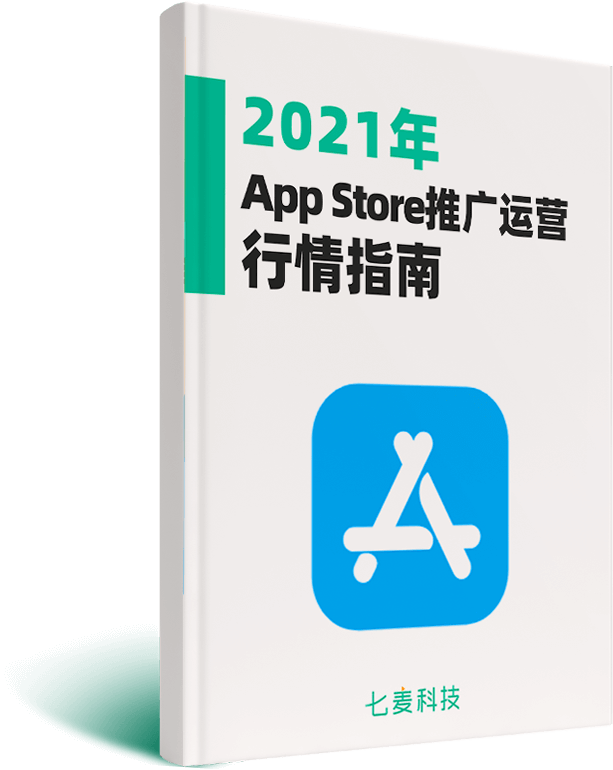Algorithms: Animation Display
Visual Debug Problems!
开发者: 森 林
14天2小时
最新版本上线距今
6
近1年版本更新次数
2023-01-23
全球最早版本上线日期
版本: 4.0.0
版本更新日期
2024-11-04

Algorithms: Animation Display
Visual Debug Problems!
更新日志
New Code Practice Feature Launched!
Enjoy coding algorithms as easily as playing a game.
By dragging and assembling code snippets,
Practice your coding logic in an engaging, interactive way,
And enhance your algorithm implementation skills.
Come try this brand-new code challenge now!应用描述
Did you pass the interview algorithm question? Learning algorithm questions takes too much time? Not your problem! Before this, no algorithmic learning method could be so simple and efficient.
It only takes three steps to become an algorithm master:
The first step is to read the question;
The second step is to play the animation, refer to the subtitles, and understand the ideas and codes;
The third step is to read, analyze and summarize;
Why do you make an algorithm animation diagram app?
Like many programmers, I have to prepare a lot of time to brush up the algorithm every time I change jobs. Very good, in the process of brushing the questions, you must first read the solution. I also read a lot of problem solutions from big guys on the Internet, and I especially like to read algorithm analysis with moving pictures or schematic diagrams, which is faster than reading text. In the process, several problems were also found, such as: the animation is not interactive and cannot be paused; the data is dead and cannot be changed; it is not convenient to study on the mobile phone, etc.
I saw some good animations at the beginning, and I had a strong urge to implement them in the app with native code several times. This time I finally made up my mind and made 70 animations in one go.
I understand that the positioning of this app is a tool that can help us quickly understand algorithm ideas and codes, help memory, and improve learning efficiency. But here you can't submit, you can't execute the code, and the code still needs to be typed on the computer to make it feel better.
Why is it not arranged in the order of the leetcode number?
At present, the algorithm questions are classified into three major blocks:
- linked list, string, array, binary tree;
- Backtracking, greedy, dynamic programming, divide and conquer;
- Sort and classify separately.
Under each category, the difficulty is divided into easy, medium and hard.
First classify data structures and algorithms separately, and learn according to knowledge points. For example, you can concentrate on learning binary tree structures or dynamic programming algorithms, so that concentrated saturation training can help improve learning efficiency. The data structure comes first, and the algorithm follows, which is also arranged in the order in which we learn theoretical knowledge.
In terms of algorithms, four types are currently arranged: backtracking, greedy, dynamic programming, and divide-and-conquer.
When I learned data structures and algorithms many years ago, I first came into contact with various sorting algorithms. At that time, I felt that sorting was too difficult, and I was very impressed, so I made a separate sorting classification for beginners.
Thinking on how to combine animation and code and other interactive issues
- In the process of learning algorithms by myself, I often understand the ideas, but I can't understand the codes, and many codes in the text explanations have no comments. Seeing this is a big headache. Therefore, when thinking about App interaction, the code highlighting function is specially designed, which means that each line of code will be highlighted as the animation progresses. In this way, the animation is executing, the code is highlighted, and it looks cool.
- Although the animation is easy to understand, it still needs some short explanations, so the "subtitle" function is designed below the animation. Every time the corresponding step is executed, the corresponding explanation will be displayed.
- Animation playback and reset, each algorithm page has a playback function, so how to prepare test cases? To simplify the concept of test cases, a "reset" button is designed, which means that the test cases are random. When you want to change a set of data, just click reset.版本: 3.0.11
版本更新日期
2024-09-26

Algorithms: Animation Display
Visual Debug Problems!
更新日志
Fix the bug in the quicksort algorithm.应用描述
Did you pass the interview algorithm question? Learning algorithm questions takes too much time? Not your problem! Before this, no algorithmic learning method could be so simple and efficient.
It only takes three steps to become an algorithm master:
The first step is to read the question;
The second step is to play the animation, refer to the subtitles, and understand the ideas and codes;
The third step is to read, analyze and summarize;
Why do you make an algorithm animation diagram app?
Like many programmers, I have to prepare a lot of time to brush up the algorithm every time I change jobs. Very good, in the process of brushing the questions, you must first read the solution. I also read a lot of problem solutions from big guys on the Internet, and I especially like to read algorithm analysis with moving pictures or schematic diagrams, which is faster than reading text. In the process, several problems were also found, such as: the animation is not interactive and cannot be paused; the data is dead and cannot be changed; it is not convenient to study on the mobile phone, etc.
I saw some good animations at the beginning, and I had a strong urge to implement them in the app with native code several times. This time I finally made up my mind and made 70 animations in one go.
I understand that the positioning of this app is a tool that can help us quickly understand algorithm ideas and codes, help memory, and improve learning efficiency. But here you can't submit, you can't execute the code, and the code still needs to be typed on the computer to make it feel better.
Why is it not arranged in the order of the leetcode number?
At present, the algorithm questions are classified into three major blocks:
- linked list, string, array, binary tree;
- Backtracking, greedy, dynamic programming, divide and conquer;
- Sort and classify separately.
Under each category, the difficulty is divided into easy, medium and hard.
First classify data structures and algorithms separately, and learn according to knowledge points. For example, you can concentrate on learning binary tree structures or dynamic programming algorithms, so that concentrated saturation training can help improve learning efficiency. The data structure comes first, and the algorithm follows, which is also arranged in the order in which we learn theoretical knowledge.
In terms of algorithms, four types are currently arranged: backtracking, greedy, dynamic programming, and divide-and-conquer.
When I learned data structures and algorithms many years ago, I first came into contact with various sorting algorithms. At that time, I felt that sorting was too difficult, and I was very impressed, so I made a separate sorting classification for beginners.
Thinking on how to combine animation and code and other interactive issues
- In the process of learning algorithms by myself, I often understand the ideas, but I can't understand the codes, and many codes in the text explanations have no comments. Seeing this is a big headache. Therefore, when thinking about App interaction, the code highlighting function is specially designed, which means that each line of code will be highlighted as the animation progresses. In this way, the animation is executing, the code is highlighted, and it looks cool.
- Although the animation is easy to understand, it still needs some short explanations, so the "subtitle" function is designed below the animation. Every time the corresponding step is executed, the corresponding explanation will be displayed.
- Animation playback and reset, each algorithm page has a playback function, so how to prepare test cases? To simplify the concept of test cases, a "reset" button is designed, which means that the test cases are random. When you want to change a set of data, just click reset.版本: 3.0.10
版本更新日期
2024-09-23

Algorithms: Animation Display
Visual Debug Problems!
更新日志
- Fix the bug in the bubble sort.应用描述
暂无应用描述数据
版本: 3.0.9
版本更新日期
2024-07-01

Algorithms: Animation Display
Visual Debug Problems!
更新日志
Minor bug and stability fixes.应用描述
暂无应用描述数据
版本: 3.0.8
版本更新日期
2024-06-10

Algorithms: Animation Display
Visual Debug Problems!
更新日志
Minor bug and stability fixes.
应用描述
暂无应用描述数据
版本: 3.0.7
版本更新日期
2024-01-10

Algorithms: Animation Display
Visual Debug Problems!
更新日志
- Fixed certain issues and optimized overall app quality.应用描述
Did you pass the interview algorithm question? Learning algorithm questions takes too much time? Not your problem! Before this, no algorithmic learning method could be so simple and efficient.
It only takes three steps to become an algorithm master:
The first step is to read the question;
The second step is to play the animation, refer to the subtitles, and understand the ideas and codes;
The third step is to read, analyze and summarize;
Why do you make an algorithm animation diagram app?
Like many programmers, I have to prepare a lot of time to brush up the algorithm every time I change jobs. Very good, in the process of brushing the questions, you must first read the solution. I also read a lot of problem solutions from big guys on the Internet, and I especially like to read algorithm analysis with moving pictures or schematic diagrams, which is faster than reading text. In the process, several problems were also found, such as: the animation is not interactive and cannot be paused; the data is dead and cannot be changed; it is not convenient to study on the mobile phone, etc.
I saw some good animations at the beginning, and I had a strong urge to implement them in the app with native code several times. This time I finally made up my mind and made 70 animations in one go.
I understand that the positioning of this app is a tool that can help us quickly understand algorithm ideas and codes, help memory, and improve learning efficiency. But here you can't submit, you can't execute the code, and the code still needs to be typed on the computer to make it feel better.
Why is it not arranged in the order of the leetcode number?
At present, the algorithm questions are classified into three major blocks:
- linked list, string, array, binary tree;
- Backtracking, greedy, dynamic programming, divide and conquer;
- Sort and classify separately.
Under each category, the difficulty is divided into easy, medium and hard.
First classify data structures and algorithms separately, and learn according to knowledge points. For example, you can concentrate on learning binary tree structures or dynamic programming algorithms, so that concentrated saturation training can help improve learning efficiency. The data structure comes first, and the algorithm follows, which is also arranged in the order in which we learn theoretical knowledge.
In terms of algorithms, four types are currently arranged: backtracking, greedy, dynamic programming, and divide-and-conquer.
When I learned data structures and algorithms many years ago, I first came into contact with various sorting algorithms. At that time, I felt that sorting was too difficult, and I was very impressed, so I made a separate sorting classification for beginners.
Thinking on how to combine animation and code and other interactive issues
- In the process of learning algorithms by myself, I often understand the ideas, but I can't understand the codes, and many codes in the text explanations have no comments. Seeing this is a big headache. Therefore, when thinking about App interaction, the code highlighting function is specially designed, which means that each line of code will be highlighted as the animation progresses. In this way, the animation is executing, the code is highlighted, and it looks cool.
- Although the animation is easy to understand, it still needs some short explanations, so the "subtitle" function is designed below the animation. Every time the corresponding step is executed, the corresponding explanation will be displayed.
- Animation playback and reset, each algorithm page has a playback function, so how to prepare test cases? To simplify the concept of test cases, a "reset" button is designed, which means that the test cases are random. When you want to change a set of data, just click reset.版本: 3.0.6
版本更新日期
2023-11-14

Algorithms: Animation Display
Visual Debug Problems!
更新日志
- Fixed certain issues and optimized overall app quality.应用描述
Did you pass the interview algorithm question? Learning algorithm questions takes too much time? Not your problem! Before this, no algorithmic learning method could be so simple and efficient.
It only takes three steps to become an algorithm master:
The first step is to read the question;
The second step is to play the animation, refer to the subtitles, and understand the ideas and codes;
The third step is to read, analyze and summarize;
Why do you make an algorithm animation diagram app?
Like many programmers, I have to prepare a lot of time to brush up the algorithm every time I change jobs. Very good, in the process of brushing the questions, you must first read the solution. I also read a lot of problem solutions from big guys on the Internet, and I especially like to read algorithm analysis with moving pictures or schematic diagrams, which is faster than reading text. In the process, several problems were also found, such as: the animation is not interactive and cannot be paused; the data is dead and cannot be changed; it is not convenient to study on the mobile phone, etc.
I saw some good animations at the beginning, and I had a strong urge to implement them in the app with native code several times. This time I finally made up my mind and made 70 animations in one go.
I understand that the positioning of this app is a tool that can help us quickly understand algorithm ideas and codes, help memory, and improve learning efficiency. But here you can't submit, you can't execute the code, and the code still needs to be typed on the computer to make it feel better.
Why is it not arranged in the order of the leetcode number?
At present, the algorithm questions are classified into three major blocks:
- linked list, string, array, binary tree;
- Backtracking, greedy, dynamic programming, divide and conquer;
- Sort and classify separately.
Under each category, the difficulty is divided into easy, medium and hard.
First classify data structures and algorithms separately, and learn according to knowledge points. For example, you can concentrate on learning binary tree structures or dynamic programming algorithms, so that concentrated saturation training can help improve learning efficiency. The data structure comes first, and the algorithm follows, which is also arranged in the order in which we learn theoretical knowledge.
In terms of algorithms, four types are currently arranged: backtracking, greedy, dynamic programming, and divide-and-conquer.
When I learned data structures and algorithms many years ago, I first came into contact with various sorting algorithms. At that time, I felt that sorting was too difficult, and I was very impressed, so I made a separate sorting classification for beginners.
Thinking on how to combine animation and code and other interactive issues
- In the process of learning algorithms by myself, I often understand the ideas, but I can't understand the codes, and many codes in the text explanations have no comments. Seeing this is a big headache. Therefore, when thinking about App interaction, the code highlighting function is specially designed, which means that each line of code will be highlighted as the animation progresses. In this way, the animation is executing, the code is highlighted, and it looks cool.
- Although the animation is easy to understand, it still needs some short explanations, so the "subtitle" function is designed below the animation. Every time the corresponding step is executed, the corresponding explanation will be displayed.
- Animation playback and reset, each algorithm page has a playback function, so how to prepare test cases? To simplify the concept of test cases, a "reset" button is designed, which means that the test cases are random. When you want to change a set of data, just click reset.版本: 3.0.5
版本更新日期
2023-11-13

Algorithms: Animation Display
Visual Debug Problems!
更新日志
bug fix.应用描述
Did you pass the interview algorithm question? Learning algorithm questions takes too much time? Not your problem! Before this, no algorithmic learning method could be so simple and efficient.
It only takes three steps to become an algorithm master:
The first step is to read the question;
The second step is to play the animation, refer to the subtitles, and understand the ideas and codes;
The third step is to read, analyze and summarize;
Why do you make an algorithm animation diagram app?
Like many programmers, I have to prepare a lot of time to brush up the algorithm every time I change jobs. Very good, in the process of brushing the questions, you must first read the solution. I also read a lot of problem solutions from big guys on the Internet, and I especially like to read algorithm analysis with moving pictures or schematic diagrams, which is faster than reading text. In the process, several problems were also found, such as: the animation is not interactive and cannot be paused; the data is dead and cannot be changed; it is not convenient to study on the mobile phone, etc.
I saw some good animations at the beginning, and I had a strong urge to implement them in the app with native code several times. This time I finally made up my mind and made 70 animations in one go.
I understand that the positioning of this app is a tool that can help us quickly understand algorithm ideas and codes, help memory, and improve learning efficiency. But here you can't submit, you can't execute the code, and the code still needs to be typed on the computer to make it feel better.
Why is it not arranged in the order of the leetcode number?
At present, the algorithm questions are classified into three major blocks:
- linked list, string, array, binary tree;
- Backtracking, greedy, dynamic programming, divide and conquer;
- Sort and classify separately.
Under each category, the difficulty is divided into easy, medium and hard.
First classify data structures and algorithms separately, and learn according to knowledge points. For example, you can concentrate on learning binary tree structures or dynamic programming algorithms, so that concentrated saturation training can help improve learning efficiency. The data structure comes first, and the algorithm follows, which is also arranged in the order in which we learn theoretical knowledge.
In terms of algorithms, four types are currently arranged: backtracking, greedy, dynamic programming, and divide-and-conquer.
When I learned data structures and algorithms many years ago, I first came into contact with various sorting algorithms. At that time, I felt that sorting was too difficult, and I was very impressed, so I made a separate sorting classification for beginners.
Thinking on how to combine animation and code and other interactive issues
- In the process of learning algorithms by myself, I often understand the ideas, but I can't understand the codes, and many codes in the text explanations have no comments. Seeing this is a big headache. Therefore, when thinking about App interaction, the code highlighting function is specially designed, which means that each line of code will be highlighted as the animation progresses. In this way, the animation is executing, the code is highlighted, and it looks cool.
- Although the animation is easy to understand, it still needs some short explanations, so the "subtitle" function is designed below the animation. Every time the corresponding step is executed, the corresponding explanation will be displayed.
- Animation playback and reset, each algorithm page has a playback function, so how to prepare test cases? To simplify the concept of test cases, a "reset" button is designed, which means that the test cases are random. When you want to change a set of data, just click reset.版本: 3.0.4
版本更新日期
2023-10-31

Algorithms: Animation Display
Visual Debug Problems!
更新日志
bug fix.应用描述
Did you pass the interview algorithm question? Learning algorithm questions takes too much time? Not your problem! Before this, no algorithmic learning method could be so simple and efficient.
It only takes three steps to become an algorithm master:
The first step is to read the question;
The second step is to play the animation, refer to the subtitles, and understand the ideas and codes;
The third step is to read, analyze and summarize;
Why do you make an algorithm animation diagram app?
Like many programmers, I have to prepare a lot of time to brush up the algorithm every time I change jobs. Very good, in the process of brushing the questions, you must first read the solution. I also read a lot of problem solutions from big guys on the Internet, and I especially like to read algorithm analysis with moving pictures or schematic diagrams, which is faster than reading text. In the process, several problems were also found, such as: the animation is not interactive and cannot be paused; the data is dead and cannot be changed; it is not convenient to study on the mobile phone, etc.
I saw some good animations at the beginning, and I had a strong urge to implement them in the app with native code several times. This time I finally made up my mind and made 70 animations in one go.
I understand that the positioning of this app is a tool that can help us quickly understand algorithm ideas and codes, help memory, and improve learning efficiency. But here you can't submit, you can't execute the code, and the code still needs to be typed on the computer to make it feel better.
Why is it not arranged in the order of the leetcode number?
At present, the algorithm questions are classified into three major blocks:
- linked list, string, array, binary tree;
- Backtracking, greedy, dynamic programming, divide and conquer;
- Sort and classify separately.
Under each category, the difficulty is divided into easy, medium and hard.
First classify data structures and algorithms separately, and learn according to knowledge points. For example, you can concentrate on learning binary tree structures or dynamic programming algorithms, so that concentrated saturation training can help improve learning efficiency. The data structure comes first, and the algorithm follows, which is also arranged in the order in which we learn theoretical knowledge.
In terms of algorithms, four types are currently arranged: backtracking, greedy, dynamic programming, and divide-and-conquer.
When I learned data structures and algorithms many years ago, I first came into contact with various sorting algorithms. At that time, I felt that sorting was too difficult, and I was very impressed, so I made a separate sorting classification for beginners.
Thinking on how to combine animation and code and other interactive issues
- In the process of learning algorithms by myself, I often understand the ideas, but I can't understand the codes, and many codes in the text explanations have no comments. Seeing this is a big headache. Therefore, when thinking about App interaction, the code highlighting function is specially designed, which means that each line of code will be highlighted as the animation progresses. In this way, the animation is executing, the code is highlighted, and it looks cool.
- Although the animation is easy to understand, it still needs some short explanations, so the "subtitle" function is designed below the animation. Every time the corresponding step is executed, the corresponding explanation will be displayed.
- Animation playback and reset, each algorithm page has a playback function, so how to prepare test cases? To simplify the concept of test cases, a "reset" button is designed, which means that the test cases are random. When you want to change a set of data, just click reset.版本: 3.0.3
版本更新日期
2023-08-29

Algorithms: Animation Display
Visual Debug Problems!
更新日志
English language supported!应用描述
暂无应用描述数据










 京公网安备 11010502041000号
京公网安备 11010502041000号





